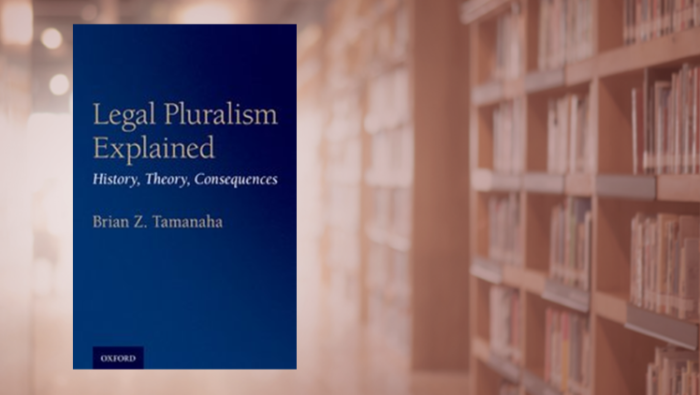
Learning and Living Legal Pluralism

Brian Tamanaha is one of those very few scholars who masterfully combine legal and social theoretical knowledge, write with exceptional clarity, and describe even the most complex theoretical problems in the most accessible manner. His contribution to social and legal theory and philosophy is outstanding and longstanding, and his work, which is both instructive and innovative, rightly belongs to the contemporary Socio-Legal canon.
As its title suggests, Tamanaha’s latest book Legal Pluralism Explained: History, Theory, Consequences is a historical and theoretical overview of one of the most overused concepts in contemporary social and legal studies, namely the concept of legal pluralism. It permeates legal theory, anthropology, sociology, and ethnography as much as more conventional streams of legal philosophy and jurisprudence. This conceptual inflation leads to the theoretical and intellectual confusion that Tamanaha tackles by offering a snapshot of legal pluralism in its historical and Western, as much as postcolonial and global transnational, contexts.
Tamanaha revisits and summarises notoriously discussed distinctions of pluralism and monism and highlights theoretical challenges to legal monism and its hierarchies as much as the boundaries and contrasts between state law and non-state normative orders. While discussing meanings of legal pluralism and distinctions between ‘weak’ and ‘strong’ pluralism in the theories of John Griffiths, Sally Falk Merry, and others, he offers another distinction inspired by these early sociological and anthropological theories of pluralism. This is the distinction between abstract legal pluralism formulated as a theoretical construct describing a multiplicity of a single form of law, and folk legal pluralism comprehended as a multiplicity of different forms of law recognised by people within society. Tamanaha thus draws on the structural importance of informal, overlapping, and spontaneously evolving normative orders and regimes in society’s law.
Like so many other adherents of legal pluralism, Tamanaha revisits Eugen Ehrlich’s early sociology of the ‘living law’ and finds it critically important for our contemporary understanding and critique of state law in supranational and transnational legal and political developments. Global changes in the societal organisation of political power and the function of legal regimes beyond the nation state are summarised in the final part of this book. Here, rather than constructing groundbreaking theoretical arguments and conceptualisations, Tamanaha critically summarises the existing body of knowledge and literature on legal pluralism and strengthens the sociological perspective of law as a plurality of legal orders normatively operating within, beyond, and outside the nation state.
Tamanaha draws on the difference between the sociological concept of law as a spontaneously evolving and collectively recognised structure of multiple normative orders, and the juristic concept of law as a system of legal rules and principles authorising power operating in commonly ordered society. For him, the societal process of globalisation, one segment of which is Europeanisation, calls for rethinking the very concept of a normative order and authority. The reader, therefore, might be surprised how little attention Tamanaha gives to the problem of power structures or political and legal hierarchies operating through heterarchies of non-state and unofficial legal regimes and soft laws of transnational governance.
The simple fact of coexistence of different official laws mutually recognising authority and negotiating their limits in the process of legal or constitutional dialogue, such as those designed for the complex structure of EU law, is distinguished from the plurality of coexisting official and unofficial normative systems and regimes constituting society. Emphasising the priority of informal social recognition over formal legal recognition, Tamanaha’s latest work, however, remains exposed to the longstanding criticisms of theories of legal pluralism as variations of ethnographic and anthropological romanticism fascinated too much by hidden and spontaneously evolving structures of law beyond political institutions and enforcement.
Significantly contributing to the current debates of legal pluralism, Tamanaha’s book represents a valuable introduction into basic concepts and theories which both summarises and reformulates a central defining distinction. That is the distinction between the juristic concept of legal pluralism as a system of pluralistic legal sources and the sociological concept defining legal pluralism as a societal plurality of self-constituting normative orders.

